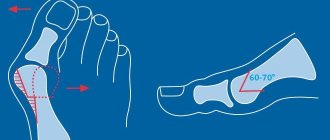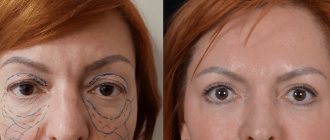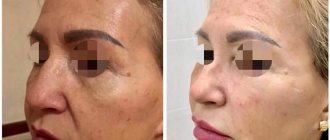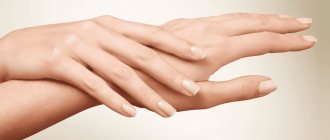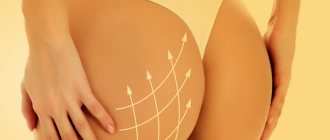general information
Curvature of the legs is a problem that creates a strong psychological complex in women.
A woman with such a complex always tries to wear trousers, and wears dresses only when necessary, and then long ones - to the floor. Curvature of the legs can be true , when the basis is a violation of the axis of the limb, caused by the structure of the bones and joints, and false , when the main reason is the underdevelopment of the muscles of the leg or their atrophy due to past diseases. If you put your feet together, then with a false curvature your legs touch each other at the knees.
Unfortunately, correcting the shape of the lower leg through physical exercise is impossible.
Treatment of true curvature of the leg requires surgery on the bones of the leg and falls under the competence of traumatologists - orthopedists.
To treat false curvature of the tibia, we use two methods of surgery: lipofilling and endoprosthetics.
Lipofilling of the lower leg is a surgical operation to increase the volume and correct its shape by transplanting your own fat.
Surgery planning and preoperative preparation
Correction of the curvature of the legs is performed under general anesthesia or epidural anesthesia and takes about an hour.
The duration of the operation may be longer due to the fact that in addition to correcting the curvature of the legs, operations are simultaneously performed to improve the shape of the hips, sometimes the buttocks and waist. This is very reasonable, as it significantly improves the aesthetic proportions of the body.
When assessing the beauty of legs, we evaluate the situation as a whole, paying attention not only to the straightness and smoothness of the lines, but also to the ratio of the volumes of the buttocks, thighs and legs. Straight but thick legs are far from aesthetic standards.
Two weeks before surgery, you should not take aspirin, due to possible increased tissue bleeding.
The day before surgery, you should shower with antibacterial soap. There is no need to shave your legs before surgery.
If one-stage liposuction is planned, then for 2-3 weeks after the operation you will need to wear compression garments, which must be selected and purchased in advance at the clinic.
The first part of the material can be found
at this link Types of deformation of the legs.
Today, the type of deformation of the legs is usually determined according to the classification of A. A. Artemyev, proposed in 2001. According to Artemyev, the ideal shape of the legs is characterized by the presence of three fusiform spaces along the internal contour, limited by the perineum, closed knee joints, an array of soft tissues in the upper third of the lower leg and ankles. Based on the designated ideal, Artemyev identifies the following types of curvatures of the lower extremities (Fig. 1):
Rice. 1. Different shapes of the lower extremities according to A. A. Artemyev a) ideal shape of the legs; b) true O-shaped deformity of the legs, caused by deformation of the tibia; c) false curvature of the legs; d) true X-shaped deformity of the legs, caused by deformation of the tibia.
— true (0-shaped) curvature is a feature of the anatomy of the lower extremities associated with deformation of the tibia, which is externally manifested by the presence of a defect in the internal contour from the perineum to the closed ankles in a free stance without tension. In other words, in the presence of a true O-shaped deformity, the legs, placed together, will connect only at the crotch and ankles, and the inner contour will form the letter O.
- true (X-shaped) curvature is a feature of the anatomy of the lower extremities associated with deformation of the tibia, which is externally manifested by the absence of closure of the ankles with the hips closed in a free stance without tension. In other words, the legs close at the crotch and knees, forming the letter X.
— false curvature is a structural feature of the lower extremities, which manifests itself as an impression of curvature in the absence of bone deformation and is associated with the peculiarities of the distribution of soft tissues. In this case, the legs touch at the crotch, knees and ankles, without connecting at the shins.
However, clinically manifested O- and X-shaped deformities of the legs are not always caused by curvature of the tibia. According to some authors, true curvature of the lower extremities can be caused by small axial deformations due to a violation of the anatomy of the knee joint and the structural features of the condyles. (Fig. 2).
To accurately determine the type of curvature of the legs, it is customary to determine the mechanical structural axis - the conventional “line of gravity” along which the main mechanical load on the leg is distributed. The structural axis with a straight, perfectly straight leg runs from the midpoint of the hip joint through the middle of the knee joint (the middle of the condyles, femur and tibia) and the middle of the ankle fork. A deviation of the passage of the axis through the central point of the knee joint by 4-5 mm is insignificant and is considered acceptable.
With an O-shaped deformity of the lower extremities, the knee joint will deviate outward from the mechanical structural axis, and with an X-shaped deformity inward. With false varus deformity, the structural axis will pass through the middle of more than three joints, just as with ideal legs (Fig. 3).
Fig. 3. Options for the passage of the mechanical structural axis with different shapes of the lower extremities:
a, c) with the ideal shape of the legs, as well as with false curvature of the legs, the mechanical axis runs from the midpoint of the hip joint through the middle of the knee joint (the middle of the condyles, femur and tibia) and the middle of the ankle fork;
b) with a true O-shaped deformation of the legs, regardless of the reasons for which it arose, the mechanical structural axis will pass through the middle of the hip joint and ankle fork, along the inner surface of the knee joint;
c) false varus deformity is considered to be a deformity of the lower extremities, which is associated with the distribution of soft tissues: the legs placed together do not touch in the middle of the lower leg, but only touch in the area of the knees and ankles;
d) with a true X-shaped deformity of the legs, regardless of the reasons for its occurrence, the mechanical axis passes through the middle of the hip joint and ankle fork, outward from the knee joint.
Dr. A. A. Artemyev believes that the term deformity can only be used when defining O- and X-shaped abnormalities in the shape of the lower extremities, which require orthopedic surgery for their correction. In his opinion, in aesthetic surgery the term curvature or curvature is more justified, because there is no deviation of the constructive axis. However, other authors have proven that false varus deformity of the tibia is always accompanied by anatomical changes, such as torsion of the tibia bones, hyperplasia of the internal condyle of the femur and compensatory phenomena in adjacent joints of varying degrees of severity. We agree with these authors and use the term “deformation” instead of “curvature” in our work.
In addition to Artemyev’s classification, there are other detailed classifications of true varus deformity according to body type and types of distribution of soft tissues in the lower extremities with definitions of indications for osteoplastic surgery. For example, the classification proposed by orthopedist Merker in 2009. Such classifications are very cumbersome, difficult to understand and use in practice, and are of significance only for orthopedic traumatologists.
In case of false varus deformity of the legs, contour plastic surgery of soft tissues is indicated, which is the area of interest of plastic surgeons, since orthopedic traumatologists practically do not deal with it.
Types of false deformities of the legs
Quite often we see various variants of false curvature of the lower extremities that do not fall within the narrow framework of A. Artemyev’s classification. After analyzing photographs of our patients with varus and valgus deformities, we came to the conclusion that there are several main options for the distribution of the soft tissues of the legs. Therefore, we have proposed the so-called “contour classification of lower leg deformity”, adapted to the needs of plastic surgery and allowing, depending on the type of soft tissue distribution, to select the appropriate correction method (Fig. 4).
Rice. 4
In addition to true varus and valgus deformities, we identified 3 more types of false varus and one (4th) type of valgus deformity of the legs in accordance with the distribution of soft tissues of the lower extremities.
Type 1 false varus deformity of the lower extremities is caused by hypoplasia (underdevelopment) of the muscles of the legs, which is manifested by a deficiency (lack) of soft tissues along the inner surface of the legs. This type of false varus deformity is eliminated by endoprosthetics or lipofilling of the legs with the creation of maximum volume along their inner surface.
Type 2 false varus deformity of the legs is caused by the peculiarity of the distribution of soft tissues along their inner surface. With sufficiently developed muscles of the legs, the impression of curvature of the legs is created due to the lack of soft tissue only in the popliteal part and the ankle area. In such situations, to correct the deformity, it may be sufficient to perform lipofilling of the popliteal region and ankles, without resorting to a significant increase in volume along the inner surface of the legs as a whole, for example, using implants.
Type 3 false varus deformity is also associated with the distribution of the soft tissues of the legs. Muscle hypoplasia and soft tissue deficiency on the inner surface of the legs is combined with excess fat deposits in the hips, knees, as well as on the outer surface of the legs. In this case, for correction it is necessary to combine lipofilling of the legs with liposuction of the thighs, the inner surface of the knees and the outer surface of the legs.
Type 4 complements the variant of valgus deformity of the legs
. With this option, the illusion of curvature of the lower extremities is created due to excess deposition of adipose tissue along the inner surface of the thighs and knees. In this case, there is no curvature of the lower leg bones and no deviation of the mechanical axis. We called this option “false X-shaped deformation.” If the muscles of the legs are adequately developed, then this problem can be corrected using isolated liposuction of the inner thighs and knees. And in case of insufficient volume of the legs, liposuction of these areas can be combined with lipofilling of the legs.
Quite often we have to deal with an asymmetry in the distribution of soft tissues on the right and left shins, and therefore different types of deformation, which requires different surgical tactics. For example, a combination of lipofilling of one leg with endoprosthetics of the other or the introduction of different amounts of fat depending on the severity of asymmetry, etc.
Lipofilling of the legs
Over 6 years, from 2007 to 2012, 118 patients of our clinic underwent contour plastic surgery of the legs using lipofilling. The gender and age composition of the group is as follows: 1 man and 117 women; women - from 24 to 57 years old, men - 24 years old. Patients came to the clinic with the following problems:
— true varus deformity — 21 people;
— false varus deformity — 58 people;
— false valgus deformity — 4 people;
- asymmetry of the legs - 8 people;
— unsatisfactory volume of the legs (aesthetic) — 20 people;
— deformed contours of the legs as a result of endoprosthetics — 7 people.
Lipofilling of the legs was performed to eliminate:
— true varus deformity — 21 patients;
— false varus deformity — 58 patients;
— false valgus deformity — 4 patients;
— aesthetic insufficiency of the volume of the legs — 20 patients;
— deformation of the contours of the legs as a result of endoprosthetics — 2 patients;
— asymmetry of the legs due to soft tissue atrophy after injury (in combination with simultaneous re-endoprosthetics) — 2 patients.
We performed the first lipofilling of the legs in 2005 on a patient with false varus deformity. Given the lack of theoretical knowledge, literary sources and lack of experience, we acted very carefully. This concerned both the volume of injected fat (about 90-120 ml into each leg) and the layers of its placement (subcutaneously only). As experience was gained, in proportion to the significant increase in the number of operations, both the surgical technique and the volume of injected fat changed. The amount of fat injected ranged from 120 to 280 ml in each leg at the primary operation (mean 168.7 ml). For lipofilling to improve the contours of the legs after endoprosthetics - from 80 to 200 ml (on average 162.5 ml). The follow-up period for patients ranged from 6 months to 5 years.
To obtain optimal results, 112 patients received 1 session of lipofilling, 5 patients - 2 sessions, 1 patient - 3 sessions. The volumes of injected fat during the primary procedure were 120-280 ml in each leg, in the secondary procedure (correction after endoprosthetics) - 80-200 ml. After the procedures, patients were observed from six months to 5 years.
Lipofilling of the legs: indications and contraindications
Lipofilling of the legs allows you to solve many problems. Most often, it is used for contour plastic surgery when a false varus deformity is diagnosed, the cause of which is hypoplasia of the medial head of the gastrocnemius muscles. In addition, lipofilling of the legs allows:
— increase the volume of the legs to improve their appearance at the request of the patient;
— correct the shape of the legs with a slight degree of severity of true varus deformity;
— correct the shape of the shins in case of false deformation;
— eliminate asymmetry;
— improve the shape after endoprosthetics of the legs;
— correct soft tissue defects after injuries or previous operations on the legs.
Contraindications to lipofilling of the legs are:
- acute and chronic inflammatory diseases in the acute stage;
— violation of blood coagulation factors;
- diabetes;
— varicose veins of the lower extremities, stage 2-3;
— lack of sufficient donor areas.
Rice. 5 Photos of the patient before surgery, modeling and achieved results
This is not a public offer! There are contraindications. Before use, consultation with a specialist is required.
Before surgery, it is mandatory for all patients, after examining and assessing the condition of the soft tissue component of the lower extremities, to undergo preoperative modeling in order to show the result that can be achieved using lipofilling, taking into account the individual characteristics of the original anatomical structure. If the patient is not satisfied with the possible results of lipofilling correction, we offer other options - endoprosthetics, corrective osteotomy and others.
Immediately before the operation, the surgeon takes photographs of the patient in standard positions: on a stand - frontal with ankles closed and slightly apart (back and front views). Typically, the boundaries of the pictures start from the waist and end at the feet. In some cases, additional shooting angles in profile and half-profile, as well as on the toes in front and behind to reveal the contouring of the lower border of the calf muscles.
In our work we are guided by the concept of “harmonious beauty”. When performing lipofilling of the legs, we strive not only to increase the volume or correct the shape of the legs, but also to change the contours of the lower extremities as a whole, taking into account the wishes of the patient and our understanding of “beauty” and “ideal legs”. First of all, areas with local fat deposits – the so-called “traps” – are used to collect adipose tissue. Thus, we solve two problems: we obtain material for lipofilling of the legs and improve the contours of the body as a whole. By removing excess fat deposits in the jodhpur area, along the inner thighs and knees, we visually lengthen the legs and improve their contour. By changing the shape of the legs using lipofilling, we complete what we started and bring the structure of the legs closer to the “ideal”. Our main goal is to improve the shape of the legs in general (Fig. 6).
Rice. 6
During marking, we take into account the individual characteristics of the muscle structure and contours of the legs.
For example, in the patient in Figures 11, 12, the boundaries of the lower edge of the medial head of the gastrocnemius muscle are marked on the inner surface of the middle of the legs. Deformation and retractions in these places are especially aggravated in the position on the toes. These areas are the most difficult to correct (fill), since fat tissue must be injected only subcutaneously, which limits the ability to place fat in sufficient quantities in a limited space. Therefore, in some cases, additional correction is required to achieve a perfect, smooth transition in these areas. Lipofilling of the legs: the operation
Lipofilling of the legs can be divided into 3 stages:
1. Removal of adipose tissue from donor areas;
2. Preparation of fat for transplantation;
3. Injection of prepared fat into the soft tissues of the legs.
As a rule, the operation is performed under epidural (spinal) or combined intravenous anesthesia with a laryngeal mask with the patient in the supine position. The average duration of the operation is 1.5-2 hours.
The first stage is liposuction of the donor areas using a special technique. First, infiltration (flooding) of the donor areas is performed with a special solution (with the addition of anesthetic and adrenaline to reduce blood loss) in a 1:1 ratio in relation to the expected volume of adipose tissue sampling. We use a heated solution to avoid hypothermia in patients. To reduce the duration of the operation, two surgeons always work simultaneously at this stage.
When the required volume of adipose tissue is obtained, the operating nurse begins to process it and prepare it for transplantation. Today there is no single way to process fat. There are variations of the technique proposed by famous plastic surgeons.
Centrifugation and filtration methods were proposed by Sydney R. Coleman. This type of method can only be used for lipofilling in the facial area, when small volumes of fat are required for transplantation. Since such equipment requires a lot of time, equipment (centrifuges), consumables (syringes, etc.) and specially trained personnel (Fig. 7).
Rice. 7
The method of washing and straining through a sieve is used, in particular, by Constantino Mendietta for the preparation of large volumes of fat (Fig. 8).
Rice. 8
Rice. 9
Raul Gonzalez strains the fat through cheesecloth, and collects the “dry” fat with a spatula (Fig. 9).
Rice. 10
Roger Howrey uses machine or manual centrifugation in combination with a special lipografter and a closed system (Fig. 10).
Rice. eleven
Our clinic has adopted the technique of washing, settling, removing excess fluid and blood elements, and then transferring the prepared fat from large 60 ml syringes to 20 ml syringes (Fig. 11).
Before injection, we always photograph the amount of adipose tissue obtained (Fig. 12).
Rice. 12
This is not a public offer! There are contraindications. Before use, consultation with a specialist is required.
During the third stage - direct injection of adipose tissue into the soft tissues of the legs (lipofilling) - we place fat in both the deep (intramuscular) and superficial (subcutaneous) layers of the soft tissue (Fig. 13). This allows us to evenly distribute a significant amount of adipose tissue over the entire area of the recipient zone.
Rice. 13. Anatomy and layers of adipose tissue insertion into the soft tissues of the leg
By injecting fat intramuscularly, we achieve a maximum increase in the volume of the legs. Subcutaneous placement of adipose tissue allows you to correct obvious areas of retractions, achieving maximum tissue growth in these areas and finally molding the shape.
Before introducing adipose tissue into the soft tissues of the lower leg (recipient areas), we always perform infiltration. This is necessary to prevent hematomas, as well as for easier and more uniform distribution of injected fat in the tissues of the lower leg. The volume of injected liquid is approximately equal to the planned volume of lipofilling (Fig. 14).
Rice. 14
First, the fat is injected into the deep tissues of the legs, which is performed through small punctures on the front surface of the legs measuring 1-2 mm (Fig. 15a). In some cases, for example, when the area of the recipient zone increases (ankle area, back surface of the legs), additional incisions are required. The punctures heal almost without a trace. The injection of adipose tissue into the calf muscles allows you to create the necessary volume.
Rice. 15
At any stage of lipofilling, it is important to strictly adhere to the technique: uniform, smooth (without effort or excessive pressure), fan-shaped, sequential, multilayer injection of adipose tissue in small droplets on the reverse (retrograde) stroke of the cannula. The distance between the tunnels is equal to the diameter of the cannula. As a rule, an equal amount of fat is injected into symmetrical zones. The exception is cases with pronounced natural asymmetry, which is discussed and agreed upon with patients before surgery.
The fatty tissue is introduced using a cannula with a diameter of 2 mm, a length of 15 mm, on slide no. 6, 7 and 8 (Fig. 15b). Depending on the area of the recipient zone, 100 to 180 ml of adipose tissue can be injected intramuscularly into each leg.
Then, through the same punctures, the fat is injected into the subcutaneous fatty tissue of the legs; the principles of placing the adipose tissue are identical (Fig. 16). Fat takes root worst of all in areas with the least blood supply (ankle area), which requires us to be extremely careful and precise in placing fat tracks. Subject to the technique and rules of lipofilling, we are able to place in the subcutaneous fat layer from 80 to 150 ml, with a very large area of the recipient zone up to 200 ml of fat. At this stage, an individual, beautiful shape of the legs is created.
Rice. 16
Rice. 17
This is not a public offer! There are contraindications. Before use, consultation with a specialist is required.
At the end of the lipofilling stage, interrupted single sutures with 6/0 prolene are applied to the skin. A sterile adhesive tape is applied to the postoperative incisions. The legs are wrapped in diapers with an absorbent surface, since on the first day a large amount of sanguineous fluid is released through the incisions. The patient is wearing special underwear to create uniform compression, which will need to be worn for 4 weeks after surgery (Fig. 17).
In the postoperative period, it is mandatory to wear compression garments for 4-6 weeks. Uniform compression does not interfere with the engraftment of adipose tissue, but prevents the development of pronounced swelling of the operated areas, so we select underwear that covers all donor areas and the lipofilling area, i.e. up to the ankles.
In the early postoperative period, patients experience significant swelling, bruising and moderate discomfort in the areas of liposuction and lipofilling. From the first day after surgery, especially for patients who have large volumes of adipose tissue (more than 200 ml in each leg), a set of local physiotherapeutic procedures is prescribed to improve venous and lymphatic drainage: microcurrent, magnetic therapy, polarized light, Traumeel S ointments on the lipofilling area and Lyoton gel on the liposuction area 4 times a day. Additionally, patients take tablet medications: Detralex, Ascorutin, Traumeel S.
All patients are advised to avoid any pressure on the lipofilling area, as well as physical activity, heavy lifting, hot baths, saunas, baths, massages; do not visit the solarium (do not sunbathe and do not travel to countries with hot climates) for 2 months. Gradual increase in physical activity 2 months after surgery. It is not recommended to perform depilation for two months.
Control of contour irregularities is carried out in the third week after surgery and, if there are compactions, a light finger massage of the compacted areas is applied.
Lipofilling of the legs: complications
1. A fatty cyst with a diameter of 0.3 cm, confirmed by ultrasound examination, was noted in one patient. She is under dynamic observation.
2. We observed compactions and contour irregularities in five patients. 3 weeks after the operation, they were prescribed a light finger massage of the compacted areas, which allowed them to be completely eliminated.
3. Long-term venous and lymphatic stasis of the lower extremities.
4. Panniculitis is an inflammation of the subcutaneous fatty tissue, which is characterized by the appearance of painful lumps in the lower leg area. The main manifestations of panniculitis are: redness of the skin, swelling, pain of varying intensity, as well as burning. The spots can vary in size (from the size of a pea to the palm of an adult) and in color (from bright red to bluish-pink).
For panniculitis to occur, several conditions are necessary: lymphostasis, poor circulation, decreased immunity, trauma and infection.
In our practice, we observed panniculitis in four patients in the late postoperative period, 2-4 months later. They developed red itchy spots and the swelling in the lower legs returned. In all of them, provoking factors were identified in the postoperative period: acute viral diseases with complications, tonsillitis, depilation. After a course of antibacterial and anti-inflammatory therapy, local treatment in combination with microcurrent and magnetotherapy, all these phenomena were stopped.
Lipofilling of the legs: results
Example No. 1. The patient initially had true varus deformity of the legs. Lipoaspiration: flanks, anterior and inner surface of the thighs, knees. 280 ml of adipose tissue was injected into each leg. The photo shows the view before and 4 months after lipofilling.
This is not a public offer! There are contraindications. Before use, consultation with a specialist is required.
Example No. 2. False varus deformity of the legs, type 1, caused by muscle hypoplasia and soft tissue deficiency on the inner surface. 185 ml of adipose tissue was injected into the right shin and 175 ml into the left. Lipoaspiration: waist, flanks, riding breeches, front thighs and inner knees. The photo shows the view before and 9 months after lipofilling.
This is not a public offer! There are contraindications. Before use, consultation with a specialist is required.
Example No. 3. The patient has type 1 false varus deformity of the legs, caused by muscle hypoplasia and soft tissue deficiency on the inner surface. Lipoaspiration: flanks, riding breeches, inner thighs and knees. 190 ml of adipose tissue was injected into the right shin and 150 ml into the left. The photo shows the view before and 7 months after lipofilling.
This is not a public offer! There are contraindications. Before use, consultation with a specialist is required.
Example No. 4. False varus deformity type 1: 210 ml of fat was injected into each tibia. The photo shows the view before and 6 months after lipofilling.
This is not a public offer! There are contraindications. Before use, consultation with a specialist is required.
Example No. 5. False varus deformity type 1. 140 ml of fat was injected into each drumstick. The photo shows the view before and 1.5 years after lipofilling.
This is not a public offer! There are contraindications. Before use, consultation with a specialist is required.
Example No. 6. The patient initially had false varus deformity of the legs, type 2, caused by a lack of soft tissue in the popliteal region with sufficiently developed muscles of the legs. Lipoaspiration: waist, flanks. 90 ml of adipose tissue was injected into the popliteal fossa of the legs. The photo shows the view before and 4 months after lipofilling.
This is not a public offer! There are contraindications. Before use, consultation with a specialist is required.
Example No. 7. The patient initially had false varus deformity of the legs of type 3, caused by a violation of the distribution of soft tissues in the area of the legs. Lipoaspiration: breeches, inner thighs, knees, outer shins and ankles. 200 ml of adipose tissue was injected into each leg. The photo shows the view before and 4 months after lipofilling.
This is not a public offer! There are contraindications. Before use, consultation with a specialist is required.
Example No. 8. False varus deformity type 3. 140 ml of fat was injected, lipoaspiration from the areas of the inner surface of the thighs and knees, liposuction of the outer surfaces of the legs and ankles. The photo shows the view before and 2 years after lipofilling.
This is not a public offer! There are contraindications. Before use, consultation with a specialist is required.
Example No. 9. Correction of the contours of the lower leg after endoprosthetics. Lipoaspiration: riding breeches, anterior and inner thighs. 110 ml of adipose tissue was injected subcutaneously into each leg. The photo shows the view before and 6 months after lipofilling.
This is not a public offer! There are contraindications. Before use, consultation with a specialist is required.
Example No. 10. Correction of the contours of the lower leg after endoprosthetics. The left shin implant 160 cc was removed, Eurosilicone 60 cc was installed, 158 ml of fat was injected on the left and 78 ml on the right. 130 ml of adipose tissue was injected subcutaneously into the right and 135 ml into the left shin. The photo shows the view before and 6 months after lipofilling.
This is not a public offer! There are contraindications. Before use, consultation with a specialist is required.
Example No. 11. Correction of the contours of the lower leg after endoprosthetics. 130 ml of adipose tissue was injected subcutaneously into the right and 135 ml into the left shin. The photo shows the view before and 6 months after lipofilling.
This is not a public offer! There are contraindications. Before use, consultation with a specialist is required.
Example No. 12. False varus deformity type 1, 2 sessions. Only 230 ml of fat was injected into each drumstick.
This is not a public offer! There are contraindications. Before use, consultation with a specialist is required.
Example No. 13. Correction after unsuccessful liposuction, 2 sessions - only 230 ml of fat was injected into each shin.
This is not a public offer! There are contraindications. Before use, consultation with a specialist is required.
To communicate with patients who have undergone liposuction and/or lipofilling, come to our forum, section
Liposuction and lipofilling of the face and body
Progress of the operation. Lipofilling of the lower leg
Fat grafting is based on the ability to engraft one's own fat cells after they are removed from one area of the body and transplanted to another area of the body.
In case of false curvature of the legs, fat is transplanted to the inner surface of the leg. In this case, for autotransplantation, fat is taken from problem areas of the body where its accumulation is undesirable, for example, in the abdomen or in the area of the inner surface of the knees. Thus, the aesthetic effect of the operation is double.
During lipofilling, fat cells are collected into sterile syringes using a special cannula.
After removing the remaining solution and destroyed fat cells, transplantation of fat cells into the soft tissue of the inner surface of the leg. carried out through special cannulas.
Fat transfer is carried out through several punctures with cannulas with a diameter of up to 1.5 mm, so it does not require sutures.
The advantages of lipofilling of the lower leg are the low invasiveness of the operation, providing a short rehabilitation period, the absence of a foreign body and lower cost of treatment compared to lower leg arthroplasty.
Lipofilling can be performed under local anesthesia, but more often we do it under epidural anesthesia or general anesthesia.
Benefits of leg fat grafting
- Predictable result. The operation has been performed in plastic surgery for a long time. Based on volumetric modeling, an effective minimally invasive technique that is safe for health has been developed.
- Individual work with each patient. The surgeon takes into account the features of the anatomical structure, the state of muscle and adipose tissue to select the most promising lipofilling technique.
- No risks of rejection, allergies, displacement, contouring. The graft is your own fat, a 100% biocompatible natural material that does not cause unwanted reactions from the immune system.
- Minimally invasive portioned injection of autograft through small punctures. Selective correction exactly where it is needed.
- The natural result of lipofilling of the legs is smooth, attractive legs without traces of surgery.
- Redistribution of fat mass due to problem areas (“breeches,” hips, knees) – in general, the figure becomes more slender and proportional.
- Fast recovery. Lipid tissue contains growth factors that accelerate the healing of damaged areas. The operation is performed without incisions, leaving no scars or scars.
After operation
Lipofilling gives less pain than endoprosthetics of the legs, however, in both cases, the pain is moderate and can be easily relieved with non-narcotic analgesics. You can get up and walk on the day of surgery.
Discharge from the clinic is carried out on the day of the operation or the next day after it.
In the postoperative period, saunas and heavy physical activity should be avoided for three weeks, which can lead to injury to the transplanted fat cells and their poor engraftment.
Unfortunately, lipofilling does not result in 100% cell engraftment and therefore the postoperative result can be assessed no earlier than three months after surgery. By this time, the postoperative swelling has completely passed and it becomes clear how many fat cells have taken root on the lower leg and what the result of the treatment is.
Result of the procedure
After plastic surgery, you get an aesthetic relief in the lower leg or thigh area. Legs look natural and attractive. It is visually impossible to notice the transition between affected and unaffected areas. The resulting result of lipofilling of the ankles or hips remains forever and does not require correction in the future. The only exceptions are cases of serious metabolic disorders and a tendency to rapid loss of adipose tissue. In such situations, a repeat procedure may be required after a few years.
Lipofilling of the lower leg. Risks and complications.
Patient dissatisfaction with the treatment result is a possible risk.
In cases where the deficiency of soft tissue along the inner surface of the leg is significant, the task of replenishing it through lipofilling is not easy in terms of guaranteeing the result.
The disadvantage of lipofilling is the incomplete engraftment of fat cells. However, if the correction is incomplete, lipofilling can be repeated.
The engraftment of fat cells depends on compliance with the surgical technology, the individual characteristics of the patient and ranges from 30 to 50%. That is, out of 200-300 ml of fat transplanted to each lower leg, only half can perform its function. This poses particular challenges to obtaining symmetry and accurately correcting contour deficits. Overfilling the site of tissue deficiency with fat leads to the destruction of fat cells, and if an infection occurs, then to suppuration at the site of surgery.
Suppuration is manifested by severe swelling, local redness, pain at the operation site and symptoms of general malaise. Treatment of this complication requires surgery to open and drain the inflammation. Fortunately, this complication occurs quite rarely.
In my opinion, if the tissue deficiency in the lower leg area is significant, it is more rational to use another treatment method - lower leg replacement.
Indications for correction
- insufficient volume in the ankles, thighs or shins;
- unaesthetic thinness, muscle atrophy;
- pronounced asymmetry of the calf muscles;
- minor bone deformities;
- unaesthetic shape of legs;
- retractions and unevenness of the skin after injury or liposuction;
- uneven distribution of fat on the thighs;
- unattractive shape of legs after endoscopic prosthetics.
Depending on the location of the problem, lipofilling of the thighs, ankles, and legs is performed. Most often, the procedure is aimed at replenishing the missing volume in the calf muscles with noticeable asymmetry or unaesthetic relief.
Indications and contraindications
Correction is indicated in the following cases:
- insufficient volumes,
- need for contouring
- asymmetry,
- loss of skin elasticity,
- the appearance of wrinkles,
- retracted scars (injuries, injections),
- other types of deformations.
With the help of fat cells, they enlarge the breasts, shape the buttocks, add volume to the lips and cheekbones, smooth out the surface of the neck and more. Injections of adipose tissue are a safe and at the same time effective method of augmentation and correction.
Despite its safety, this type of correction has contraindications. People with diabetes, cancer, chronic disease in the acute stage or acute infection will not be allowed to undergo surgery. Intervention is difficult or prohibited in patients with a shortage of donor tissue. Pregnant and breastfeeding women will also be exempt from surgery. Otherwise, the procedure has no contraindications, as well as no restrictions on gender or age (with the exception of children under 18 years of age).
The operation is effective for highlighting cheekbones, enlarging lips, eliminating nasolabial folds, and so on.
Recovery duration
Since the operation is minimally traumatic, the rehabilitation period does not last long. At first you cannot:
- wet the puncture sites,
- exercise,
- be exposed to physical activity,
- visit a bathhouse or sauna,
- take hot baths,
- eat a lot of salty or spicy foods,
- smoking,
- go to the solarium,
- stay in the open sun without protection.
The timing of tissue healing, swelling and bruising is individual for each patient, so it is difficult to give an exact duration of rehabilitation. Various physiotherapy procedures (microcurrents, magnetic therapy) can speed up recovery. You can stimulate the reduction of swelling and bruising with the help of drugs such as heparin ointment or Traumeel.
At this time, it is extremely important to follow all the recommendations of your surgeon and not violate the prohibitions. You also cannot prescribe treatment for yourself: taking any medications or attending procedures without the consent of your doctor is prohibited.
How long does the effect last?
It is very difficult to calculate the exact period for maintaining the final effect. This is influenced by a large number of different factors, and not all of them are within the control of the patient or the doctor. For example, there are genetic characteristics due to which fat is absorbed faster - in such patients the time frame will be shorter.
However, if the patient has a competent attitude to the recommendations, prescriptions and prohibitions, as well as taking into account individual characteristics, the average period is two years or more. For example, if you calculate how long facial lipofilling lasts, you can estimate a period of two to five years with high-quality rehabilitation. It should also be noted that if injections are not given for the first time, the result will last longer and be more stable.
The result is great aesthetics for years to come.
Who needs
Lipofilling of the lower leg is performed if there are certain problems.
The most common include:
- hypoplasia of calf muscle tissue (congenital underdevelopment);
- dystrophy , the appearance of which can be provoked by certain pathological conditions;
- curvature of the shape after endoprosthetics.
In addition, the procedure is indicated to increase the volume of the legs, which will significantly improve the shape of the legs.
Manipulation is also carried out to correct disorders after an injury or surgery.
Lipofilling can be prescribed not only to women, but also to men. This can be facilitated by obvious pronounced curvature of the legs, when the problem cannot be solved only with the help of physical exercises.
